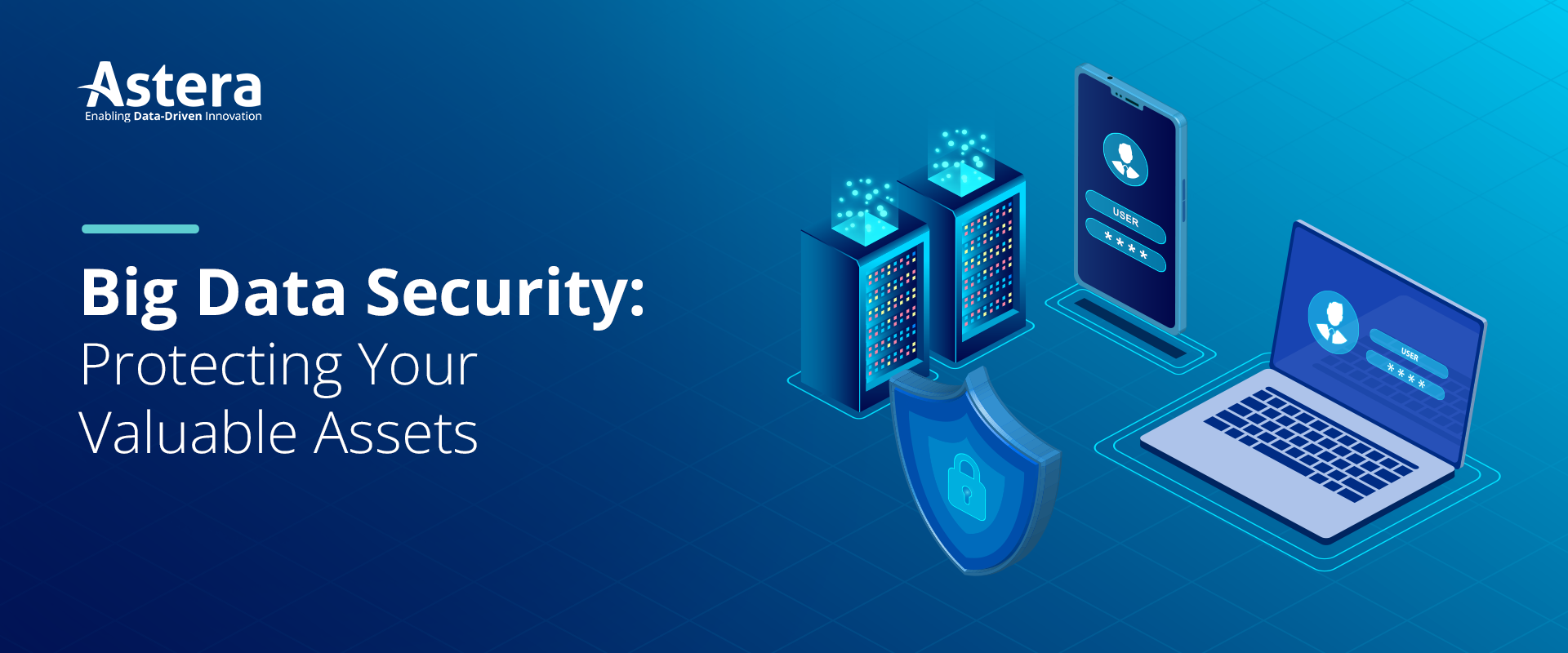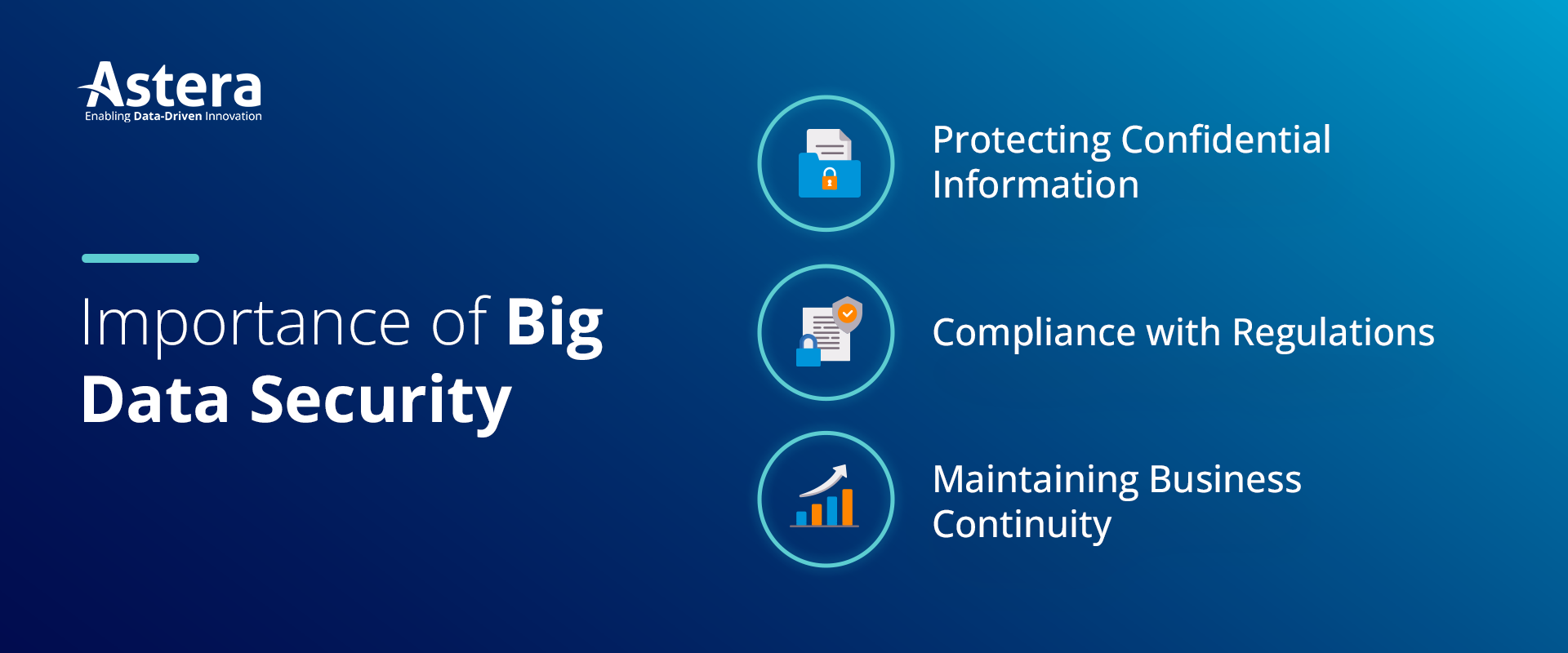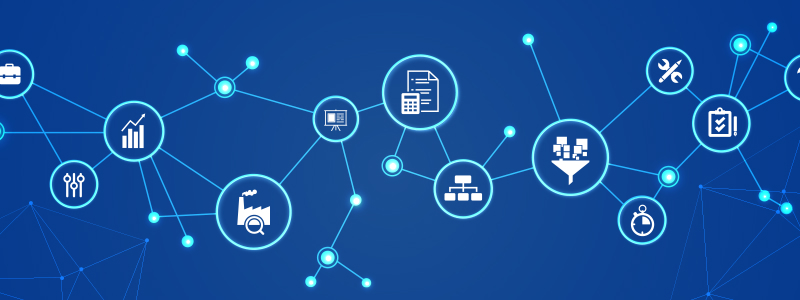
Big Data Security: Protecting Your Valuable Assets
In today’s digital age, we generate an unprecedented amount of data every day through our interactions with various technologies. This data, referred to as “big data,” encompasses everything from social media posts and online transactions to sensor readings and healthcare records. The sheer volume, velocity, and variety of big data make it difficult to manage and extract meaningful insights from.
However, the potential benefits of harnessing big data are immense, ranging from improving business operations and customer experiences to advancing scientific research and public policy. As such, it is critical for businesses and organizations to not only collect and store big data, but also ensure its security to protect sensitive information and maintain trust with customers and stakeholders.
In this blog, we will discuss the importance of big data security and the measures that can be taken to ensure it.
What is Big Data Security?

Big data security refers to the set of measures, techniques, and technologies used to protect the confidentiality, integrity, and availability of large and complex data sets. These measures are designed to prevent unauthorized access, data breaches, and other malicious attacks on valuable information assets.
Big data security is a major concern for businesses and organizations that collect, store, and analyze copious amounts of data. With the increasing amount of data being generated every day, it is essential that businesses have strong security measures in place to protect against potential breaches, thefts, or other malicious attacks.
Why is Big Data Security Important?

Big data has become an essential asset for organizations to gain insights, make informed decisions, and improve their operations. However, this valuable data can also be vulnerable to cyber threats, resulting in severe consequences for businesses and their customers. Below are some of the reasons why big data security is crucial:
Protecting Confidential Information
Big data often includes sensitive information such as personal data, financial information, and intellectual property. This information can be highly valuable to cybercriminals who can use it for identity theft, fraud, or other malicious activities. Henceforth, it is essential to ensure that this information is protected with robust security measures.
Compliance with Regulations
Many industries are subject to strict regulations regarding the handling of data, such as GDPR, HIPAA, and PCI-DSS. Failing to comply with these regulations can result in hefty fines, legal action, and damage to a company’s reputation. Strong security measures can help businesses meet regulatory requirements and avoid potential penalties.
Maintaining Business Continuity
A security breach can disrupt business operations, cause financial losses, and damage a company’s reputation. In severe cases, it can even lead to business failure. Therefore, having a secure big data infrastructure is crucial to maintain business continuity and avoid disruptions caused by cyber-attacks.
Challenges of Big Data Security
There are several measures that businesses and organizations can take to ensure the security of their big data. Here are some of them:
Data Encryption
Encryption is the process of converting data into a code that can only be deciphered with a specific key or password. Therefore, even if the data is stolen or accessed by unauthorized parties, they will not be able to read it. Businesses should consider encrypting their big data at rest and in transit to ensure its security.
Access Controls
Access controls limit who can access certain data and what actions they can perform on it. Businesses should implement role-based access controls (RBAC) to ensure that only authorized personnel can access sensitive data. Additionally, two-factor authentication can provide an extra layer of security to prevent unauthorized access.
Network Security
Network security measures such as firewalls, intrusion detection systems, and security information and event management (SIEM) tools can help prevent unauthorized access to a company’s network. However, to ensure the effectiveness of these measures, businesses should regularly update and monitor these measures.
Regular Audits and Risk Assessments
Regular audits and risk assessments can help businesses identify vulnerabilities in their big data infrastructure. Henceforth, they can take corrective actions to address them. Moreover, it is essential to conduct these assessments regularly to stay updated with the latest threats and security measures.
Employee Education and Training
Employees can be a significant source of security vulnerabilities, often unintentionally. Therefore, it is essential to educate and train them on security best practices, such as password hygiene, phishing awareness, and how to handle sensitive data.
As we have seen, implementing security measures such as data encryption, access controls, and regular audits and risk assessments is essential to ensure the security of big data infrastructure. However, businesses can also leverage data integration and management tools to enhance their security posture.
How is big data secured?
Big data is extremely valuable, but also vulnerable. Protecting big data requires a multi-faceted approach to security.
Access Control
Controlling access to sensitive data is key. Only authorized individuals should have access to personally identifiable information (PII) and other confidential data. Strict access control policies, role-based access, and the principle of least privilege help ensure that only those who need access to data can view it.
Encryption
Encrypting data both at rest and in transit is essential for security. Encryption converts data into unreadable code that can only be deciphered with a key. Encrypting data at rest (stored on databases, servers, hard drives, etc.) protects against unauthorized access. Encrypting data in transit (emails, file transfers, etc.) prevents man-in-the-middle attacks. Using strong encryption standards like AES 256-bit encryption is recommended.
Monitoring
Continuously monitoring networks and systems helps detect threats early. Monitoring tools like security information and event management (SIEM) solutions aggregate data from network devices, servers, and applications to identify anomalies that could indicate cyber threats. It is key for zero-day threats, as new attacks may not yet have a signature that can be detected by antivirus software. Monitoring should include inspecting network traffic, server logs, endpoint activity, and user behavior.
Data Loss Prevention
Data loss prevention (DLP) tools help prevent sensitive data from leaving secure systems. DLP solutions analyze data in motion (emails, file transfers, etc.) and at rest (on servers, hard drives, etc.) to detect confidential information. They can then block that data from being transmitted outside the network or quarantine/encrypt it. DLP is important for compliance with regulations like HIPAA, PCI DSS, and GDPR.
Incident Response
Having a robust incident response plan in place is necessary in the event of a data breach. The plan should outline steps to contain the breach, analyze the scope, notify affected parties, and remediate vulnerabilities. Incident response teams need to act quickly to minimize damage. Plans should be tested and updated regularly to ensure effectiveness.
With the massive amounts of data now collected and stored, securing big data is challenging but critical. Employing a defense-in-depth approach with multiple layers of security controls helps reduce risks and protect these valuable digital assets. Continuous monitoring and updating security strategies as new threats emerge are key to staying ahead of cybercriminals. Big data drives innovation, but only if it remains secure.
What are The 3 Elements on Big Data Security?
To effectively secure big data, you must focus on three core elements: confidentiality, integrity, and availability.
Confidentiality
Confidentiality means ensuring that data is only accessible to authorized users. With large volumes of data, it can be difficult to maintain confidentiality. You must implement strict access controls, encryption, and monitoring to protect sensitive data.
- Access controls: Establish clear access policies and procedures to limit user access to only the data needed for their role. Use multi-factor authentication whenever possible.
- Encryption: Encrypt data both in transit and at rest. Choose an encryption method that can handle big data volumes without significantly impacting performance or usability.
- Monitoring: Continuously monitor user access and activity to detect unauthorized access attempts or unusual behavior. Log and audit all access to sensitive data.
Integrity
Integrity means safeguarding the accuracy and consistency of data. With large, complex data sets, it can be challenging to maintain integrity. You must implement controls to prevent unauthorized changes and have processes to identify and remedy issues.
- Version control: Maintain previous versions of data sets so you can compare to detect changes. This also allows you to roll back to a previous version if needed.
- Change management: Establish a standardized process for making changes to data sets. Changes should be logged, tested, and approved before being applied.
- Data quality: Regularly check data for issues like inaccuracies, inconsistencies, and incompleteness. Have a plan in place to address any data quality issues discovered.
Availability
Availability means ensuring that data and resources are accessible to authorized users when needed. With big data, you must architect highly available systems that can handle significant storage and computing demands.
- Redundancy: Build redundancy into your systems by implementing backups, failovers, and disaster recovery plans. Duplicate critical data and infrastructure in multiple locations.
- Scalability: Design systems that can scale easily to meet increasing data storage and processing needs. Use distributed storage and computing resources that can be expanded as required.
- Monitoring: Closely monitor all systems and resources to detect issues that could impact availability like hardware failures, software issues, or network outages. Have response plans ready for any potential problems.
By focusing on confidentiality, integrity, and availability, you can build a robust security program to protect your valuable big data assets. But in today’s complex threat landscape, security is an ongoing process that requires continuous monitoring and adaptation to new risks.
Implement Big Data Security with Astera Data Stack
Astera’s data stack offers robust security features through data model deployments for role-based access controls. This enables businesses to ensure that only authorized users have access to sensitive data. Additionally, Astera’s tools provide centralized management, support for EDI standards, and data lineage, making it easier for businesses to manage and secure their big data infrastructure. Accordingly, by using our tools, businesses can have peace of mind knowing that their big data is secure and compliant with relevant regulations.
Conclusion
Big data security is crucial for businesses and organizations that collect, store, and analyze substantial amounts of data. Therefore, with the vast amount of data being generated daily, it is crucial to secure it from breaches, thefts, and attacks. By implementing measures such as data encryption, access controls, network security, regular audits and risk assessments, and employee education and training, businesses can ensure the security of their big data and avoid potential consequences of security breaches.
Accordingly, it is essential to prioritize big data security and stay up to date with the latest security measures and best practices to protect against evolving cyber threats.
 Astera AI Agent Builder - First Look Coming Soon!
Astera AI Agent Builder - First Look Coming Soon!


